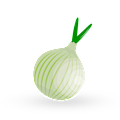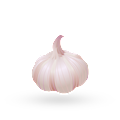Best Angolan Foods
MAIN INGREDIENTS
Muamba de galinha or chicken muamba is a Central African dish made with chicken, red palm oil sauce called muamba de dendem, garlic, okra and hot chile pepper. Palm oil gives the dish a specific flavor, while lycopene provides the red color.
Studies have shown its various health benefits – it is rich in antioxidants, helpful in preventing heart disease, and regulates cholesterol. Since that part of Africa was a Portuguese colony for ages, Portuguese gastronomy had a great influence on the local cuisine, so as a result, many dishes are based on meat and palm oil.
MAIN INGREDIENTS
Cabidela is a Portuguese dish consisting of rice and poultry or game meat cooked together with animal’s blood. Rice can be cooked alongside meat or served on the side, while red wine or vinegar are sometimes added to moderate the tartness.
With its unusual dark color and a creamy texture, cabidela is considered to be a Portuguese specialty, and it is traditionally associated with various regions in Northern Portugal. It has also been integrated into traditional Brazilian and Angolan cuisine.
MAIN INGREDIENTS
Known as funge or funje in Angola and Ghana, and mfundi in Democratic Republic of the Congo and Republic of the Congo, it is an essential side dish accompanying breakfast, lunch, and dinner meals in many households of rural families throughout these countries.
It is a type of porridge known as swallow, made from cassava flour that is stirred into water. Funge has a sticky, smooth, and creamy texture, while a slightly bland flavor makes it great for evening out the intense spices found in many local dishes.
Traditional Angolan dish kizaca, sometimes spelled quizaca or kisaca, is one of the most popular vegetarian dishes in the country. It is made with boiled cassava leaves mixed with ground peanuts. Cassava and peanuts are stewed until the dish develops a thick consistency, while the peanuts form a silky, nutty sauce.
Although it is nowadays regarded as the national dish of the country, kizaka has an interesting historical background. For centuries, Angola was a Portuguese colony, and kizaka, like most Angolan dishes, is a combination of European influences and authentic African ingredients.
Mufete is a classic Angolan grilled fish dish originating from the capital Luanda, more specifically, a sandbar called Ilha de Luanda. Influenced by Portuguese cuisine, the central piece of this dish is grilled fish (either freshwater one like tilapia or saltwater one like horse mackerel and sardine), and it comes in two variants: light and full.
The light version consists of only the fish and onion salsa, while the full version comes with additions such as beans, sweet potatoes, plantain, and cassava. Mufete was traditionally eaten at special events such as weddings and holidays. Still, nowadays, it is one of the favorite go-to dishes of Luandans (and Angolans in general), often eaten a few times per week.
MAIN INGREDIENTS
Kissuto rombo is a traditional meat dish originating from Angola. The dish is usually made with a combination of goat meat, white wine, lemon juice, garlic, hot peppers, bay leaves, olive oil, salt, and white pepper. The young goat is cleaned, washed, and rubbed with a combination of garlic, lemon juice, salt, oil, and hot peppers.
The meat is marinated overnight and the next day it's baked in the oven while being basted with white wine from time to time. Once fully cooked, the meat is typically served with rice and chips on the side.
MAIN INGREDIENTS
This hearty stew is commonly enjoyed in São Tomé e Príncipe and Angola. Though it is typically prepared with fresh or dry fish and shrimps, when it goes under the name calulu de peixe, some versions can occasionally employ meat.
Additional ingredients include okra, onions, tomatoes, eggplants, and finely chopped greens such as sweet potato leaves or cassava leaves. Calulu is traditionally accompanied by rice or funje — a creamy cassava porridge.
Cocada amarela is a sweet Angolan custard or pudding that was originally brought over to the country by the Portuguese, and was then modified by the locals. It consists of water, sugar, salt, grated coconut, and eggs. The dessert is characterized by a vivid yellow color, which is the result of a large amount of egg yolks, hence its name that can be translated as yellow cocada.
This flavorful pudding is one of the only Western-style desserts that one can find on Angolan tables.
MAIN INGREDIENTS
Catatos is a unique and unusual Angolan dish. At its most basic, the dish is made by frying caterpillars with garlic, but it can be enriched with the addition of onions, peppers, and tomatoes. The caterpillars should be quite tender, but with a crunchy texture, and some say that they taste like prawns.
The dish is packed with nutritional value since the caterpillars have higher doses of protein and iron than fish and beef. It is recommended to serve catatos with rice, funge, and hot sauce.
Papaya with Port wine is an unusual Angolan appetizer that's also an interesting way of starting a meal, usually dinner. The dish consists of sliced papayas that are drizzled with lime juice and a few drops of Port wine. Since it is such an easy dish to prepare, some say that the hardest part of the process is properly cutting up the papaya fruit.
TasteAtlas food rankings are based on the ratings of the TasteAtlas audience, with a series of mechanisms that recognize real users and that ignore bot, nationalist or local patriotic ratings, and give additional value to the ratings of users that the system recognizes as knowledgeable. TasteAtlas Rankings should not be seen as the final global conclusion about food. Their purpose is to promote excellent local foods, instill pride in traditional dishes, and arouse curiosity about dishes you haven’t tried.












